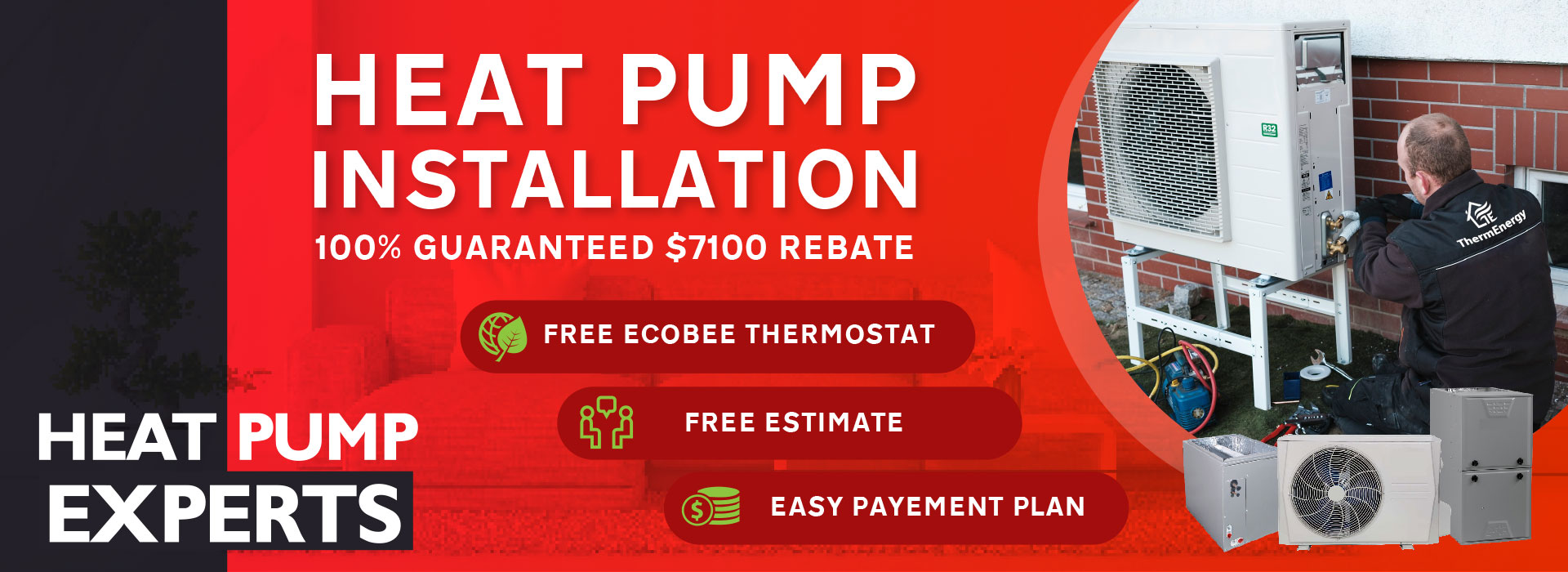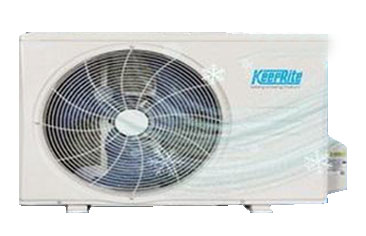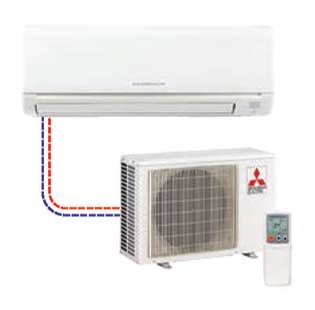
Central (Dual Fuel) Heat-Pump
Ductless Heat-Pump
What Is Heat-Pump ?
Benefits of Heat-Pump
There are several benefits to using a heat pump to heat and cool your home:
- Energy efficiency: Heat pumps are more energy-efficient than traditional heating and cooling systems because they move heat instead of generating it.
- Cost savings: Because heat pumps are more energy-efficient, they can save you almost 30% on your energy bills
- Dual-purpose: Heat pumps can provide both heating and cooling, so you only need one system instead of two.
- Environmentally friendly: Heat pumps produce fewer greenhouse gas emissions than traditional heating and cooling systems, making them a more environmentally friendly option.
- Quiet operation: Heat pump systems are quieter than traditional heating and cooling systems because they do not use a loud compressor.
- Long lifespan: Heat pumps can last up to 20 years with proper maintenance, which is longer than traditional heating and cooling systems. It can help prevent the need for extensive heat pump repairs
In a nutshell, heat pumps are an energy-efficient and environmentally friendly way to heat and cool your home. They work by extracting heat from the air, ground, or water and transferring it to another.
Types of Heat Pump
There are three main types of heat pumps: air source, ground source, and water source. Each type extracts heat from a different source and has its own advantages and disadvantagesme:
- Air source heat pumps extract heat from the outside air. They are the most common type of heat pump because they are easy to install and can be used in most climates. They may however sometimes require a backup heating source.
- Ground source heat pumps, also known as geothermal heat pumps, extract heat from the ground. They are more efficient than air source heat pumps but are slightly expensive to install.
- Water source heat pumps extract heat from a body of water, such as a lake or pond. They are the most efficient type of heat pump but are limited to homes near a body of water.
How does a heat pump work?
A heat pump system consists of two main components: an indoor unit and an outdoor unit. The outdoor unit contains a compressor, a fan, and a heat exchanger. The indoor unit contains an evaporator coil, a fan, and a heat exchanger.
Heating
When you turn on the heat pump, the outdoor unit extracts heat from the air, ground, or water (based on the type of heat pump) and transfers it to the indoor unit through a refrigerant. The refrigerant is a substance that can absorb and release heat as it circulates through the heat pump. After releasing heat, the refrigerant returns to the outdoor unit to start the process again. This cycle continues as long as the heat pump is running, continuously transferring heat from one location to another. It may be pertinent to mention that opposed to what comes to mind intuitively, the winter air in Canada contains around 85% as much heat as in summers. This makes heat pumps very effective in winters too.
Cooling
One of the crucial controls a heat pump offers is a reversing valve embedded in the outdoor unit. The reversing valve controls the flow of refrigerant depending on the user’s choice for heating or cooling. When the reversing valve is turned on, the flow of refrigerant is reversed and the heat pump starts extracting heat from the indoor instead of outdoor thus ending up giving the cooling effect.
Federal rebates for Heat Pumps
The Government of Canada offers a number of rebates and incentives to encourage homeowners to upgrade to energy-efficient heat pumps. These programs are designed to help reduce greenhouse gas emissions and energy consumption, as well as save homeowners money on their energy bills. Therm Energy works with energy companies, auditors and the government to get you guaranteed heat pump government rebate you are entitled for. We also provide extended warranty on the heat pump system so that you can have absolute peace of mind. Overall, taking advantage of federal rebates for heat pump installation it also requires ongoing heat pump services to maintain the system’s efficiency and ensure that it meets all necessary standards for rebate eligibility.
Types of heat pump installation :
CENTRAL OR DUAL FUEL HEAT PUMP
What is a dual-fuel heat pump ?

As everyone is aware, heat pumps have been used for for warmth and cooling purposes in North America for many years. Cold climate heat pumps were developed by manufacturers and engineers, and they can efficiently heat and cool our house even in conditions as cold as –15 °C. However, as we are aware, the outside temperature occasionally falls below that level in Ontario, Canada, and we must therefore use supplemental heating. To maximise comfort and economy, a dual-fuel system that combines an electric heat pump with a gas furnace and switches back and forth between the two fuel sources is used. Your furnace will take over and rapidly warm up your home if your heat pump cannot handle the extreme cold; this is done automatically by the control system, so you don’t have to worry about switching it. If you experience any issues with your heat pump system, it’s essential to get prompt heat pump repairs to ensure it functions optimally.
Installation :
Components of Dual fuel heat pump system:
The system has 3 major components
- Outdoor unit (heat pump)
- Indoor unit
- Furnace / Air handler
Outdoor unit (heat pump)
It is made up of a variable speed compressor, condenser coil, control board, and reversing valve, and it has the exact same appearance as traditional AC. If you need any heat pump services during or after installation of a heat pump system, make sure to get in touch with licensed and experienced technicians to ensure the best possible results. Most homes have a furnace or air handler installed, and it’s essential to have licensed technicians perform heat pump repairs and installation to ensure savings, reliability, and efficiency.
Indoor Unit
It is installed on top of your furnace and consists of Coil, TXV valve, and drain pan.
Furnace / Air Handler
A furnace or air handler is typically placed in homes. Heat pumps must be installed correctly by highly qualified and licensed technicians to offer savings, dependability, and efficiency.
Energy Efficient
Dual-fuel systems are created to maximize the effectiveness of your HVAC system because a heat pump is 300% more efficient than a gas furnace. Significant energy expense savings could be achieved through it. Comparatively speaking, HVAC systems using dual fuel are much more environmentally favourable. It can reduce your electricity costs by 30% to 35%, according to government statistics.
Rebate
The Canadian government is offering a $6500 rebate for eligible cold climate heat pump installations. Your rebate is 100% guaranteed.
DUCTLESS HEAT PUMP
What is a ductless heat pump ?

A ductless heat pump usually consists of an outdoor compressor unit as well as an indoor unit. It is most frequently employed in homes without conventional air conditioning or ductwork. Individual areas have their own indoor units, which can be plugged into a single outdoor unit. These systems are also referred to as multi-zone ducted systems.
Components of Ductless Heat pump:
The system has 3 major components
- Outdoor unit (heat pump)
- Indoor unit
- Furnace / Air handler
Outdoor unit (heat pump)
It looks exactly the same as conventional AC, It consists of a Variable speed compressor, Condenser coil, Control board, and reversing Valve
Indoor Unit
It is installed on top of your furnace and consists of Coil, TXV valve, and drain pan.
Furnace / Air Handler
Most houses have a furnace/air handler installed. It requires highly skilled and licensed technicians to install Heat pumps properly, or else it won’t be able to provide savings, reliability, and efficiency.
Installation
We provide full service to heat pump repairs and maintain ductless heating and cooling systems. You won’t find a better qualified or more thorough HVAC team to see to your comfort needs. So if you need heat pump Repairs or heat pump services, don’t hesitate to give us a call. We’re here to help you keep your home comfortable year-round. Remember, when it comes to the installation of heat pump systems and heat pump repairs and heat pump services, we’re the experts you can trust!
Efficiency/Energy Saving
Ductless systems use less energy than conventional ducted heat pumps (as well as air conditioners and heaters). They don’t acquire or lose heat through the duct walls, which is one reason for this. They consume less energy because they work with smaller motors.
Multiple Zone System
The separate indoor units of a ductless mini split heat pump mounted in the rooms are each controlled by a remote control, so only the units in the rooms that require heating or cooling need to be on. You don’t have to switch on all the units when you only need comfort in a few places, which is another way that ductless systems contribute to cost savings.
Types Of Indoor Units:
1) Wall-Mounted Indoor Unit
Ductless wall mounts are quicker and easier to install on the wall. A wall-mounted ductless heat pump is also known as a mini-split system or ductless mini-split system. It is an easy, convenient, and effective way to gain refrigerated air without the expense or hassle of adding ductwork to a home or business looking for air conditioning and Heating. Wall-mounted heating and cooling devices can independently control the temperature of a single room and can keep it at the exact setting you choose. The Wall-mounted Indoor Unit comes in a variety of configurations, offering the most practical answers. This indoor device keeps the temperature at the set point and is in charge of delivering cold or warm air to a zone or room. Additionally, it efficiently eliminates extra moisture from the space.
2) Ceiling Cassette Indoor Unit
Ceiling cassettes are installed flush with the ceiling, The conduit that connects the indoor and outdoor units is hidden within the ceiling.
- Ceiling cassettes are mostly installed for a better aesthetic look..
- It’s easy to install with a suspended ceiling mostly in office spaces.
- It’s hard to install as sometimes there is not enough room above the ceiling to install it.
- The ceiling cassette is more expensive than the Wall mount unit.
- Sometimes it requires a condensate pump to be installed.
3) Ducted Indoor Unit
Ducted indoor heads are mainly installed in the Attic space, from which supply returns are provided to individual rooms. Since ducted units are compact they can only be able to serve small spaces.
4) Floor-Mounted Indoor Unit
Wall attach units can occasionally not be installed due to glass walls, unlevel walls, and insufficient height. A floor mount device is most appropriate in those types of circumstances. All of the piping, electrical, and drain systems are set up beneath the floor, and it is placed there.
Application of Ductless Heat pump :
Ductless heat pumps can be used in many applications, where there is no central system, or no gas available. A few of the applications are mentioned below.
- House heated by baseboard, radiator, or no ductwork.
- Extension of house, Garage, apartments with no AC, rooms where not enough heat or cooling..
- Commercial places like offices, stores, warehouses, storage units, server rooms, and small manufacturing units..
- Mechanical elevator, pumping rooms, etc.
If you’re experiencing problems with your heat pump, you need professional heat pump repair service to ensure your system is functioning properly. Our experienced technicians provide high-quality heat pump services that include repairs and maintenance. Don’t let a faulty heat pump disrupt your daily routine – contact us today for reliable heat pump repairs services. Our team is dedicated to ensuring your system is running efficiently and effectively, so you can enjoy a comfortable indoor environment all year round. Trust us to handle all of your heat pump repair and service needs.
Call us
If you want to learn more about costs, technology, brands, rebates, and installation call or email us for free consultation.
